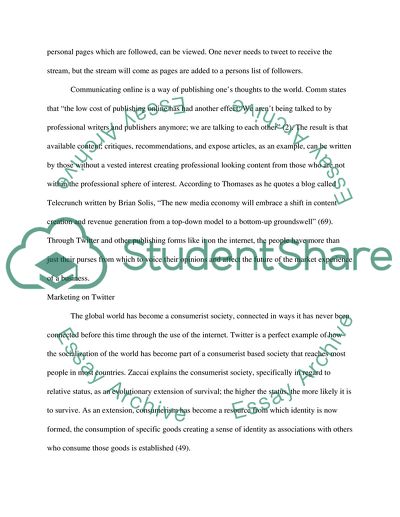Cite this document
(“The Use of Twitter: the Purposes of the Social Media and the Success Research Paper”, n.d.)
The Use of Twitter: the Purposes of the Social Media and the Success Research Paper. Retrieved from https://studentshare.org/marketing/1747108-production-and-consumption-of-tweets
The Use of Twitter: the Purposes of the Social Media and the Success Research Paper. Retrieved from https://studentshare.org/marketing/1747108-production-and-consumption-of-tweets
(The Use of Twitter: The Purposes of the Social Media and the Success Research Paper)
The Use of Twitter: The Purposes of the Social Media and the Success Research Paper. https://studentshare.org/marketing/1747108-production-and-consumption-of-tweets.
The Use of Twitter: The Purposes of the Social Media and the Success Research Paper. https://studentshare.org/marketing/1747108-production-and-consumption-of-tweets.
“The Use of Twitter: The Purposes of the Social Media and the Success Research Paper”, n.d. https://studentshare.org/marketing/1747108-production-and-consumption-of-tweets.


